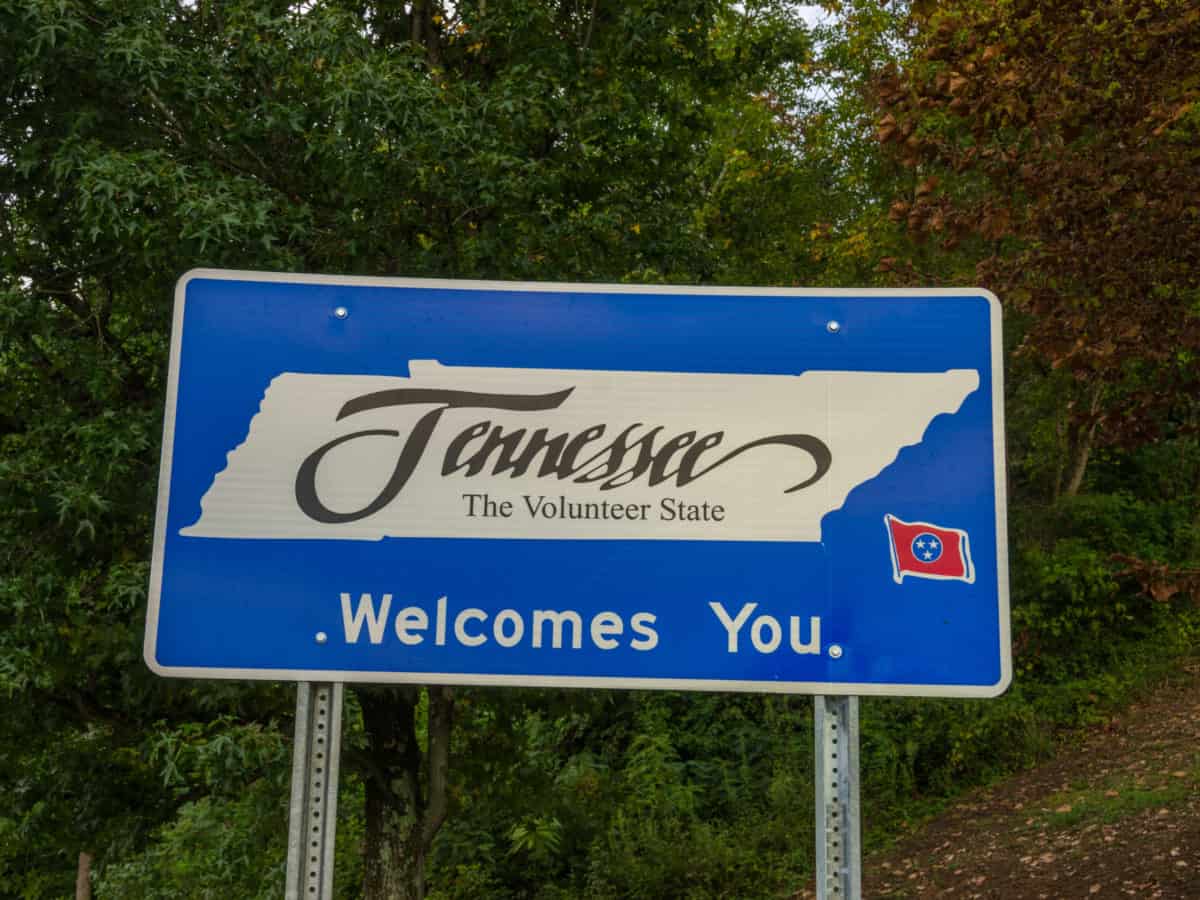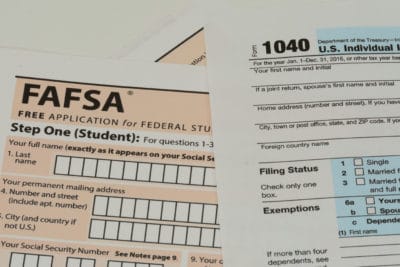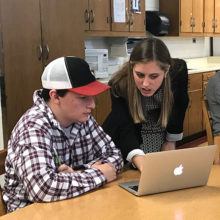
This is the third piece in a series on the FAFSA. Follow along with the rest of the series here.
For the past few years, a greater share of high school seniors have completed the Free Application for Federal Student Aid (FAFSA) in Tennessee and Louisiana than in any other states. In 2019, 80% of high school seniors in Tennessee completed the FAFSA compared to 64% in North Carolina, and as of May 15, Tennessee is currently the number one state in FAFSA completions for the 2020-2021 cycle at 75%.
Why does this matter? Completing the FAFSA allows students to receive financial aid in the form of loans, grants, and scholarships to help them pay for college. At a time when college tuition has never been higher, that aid can mean the difference between a student going to college or not.
Recently, I had the chance to talk with Bob Obrohta, executive director of the Tennessee College Access & Success Network, about how Tennessee has increased their FAFSA completion rate and what lessons we can learn from them. The following conversation has been edited for length and clarity. For more on FAFSA completion, read the rest of our series here.
Molly Osborne: Tennessee has become known for its high FAFSA rates. Can you walk me through how that has happened over the past few years?
Bob Obrohta: There are two periods of this, and it all stems from when Tennessee Promise was launched in the cohort class of 2015. What to understand is that Tennessee was really good with FAFSA completion even before Promise, but when Promise came on the scene, it really launched because of the interest in the program and in FAFSA being a requirement in order to get the Tennessee Promise scholarship.
If you look at the difference between Louisiana and Tennessee, they took two different routes to get to this really high number. In Louisiana, it’s now a requirement for high school graduation that students complete a FAFSA, and that’s how they drove [high FAFSA completion rates]. Tennessee’s path was a little bit more grassroots.
It goes back to when former Governor Bredesen — this would have been early 2000’s — launched the HOPE Scholarship, which is our academic scholarship that’s state funded through lottery dollars. You have to have either a 3.0 GPA or a 21 on the ACT to leverage those dollars, and the dollars are pretty significant. Back in the day, it was $4,000 for each student [per year], and now it’s $3,500 for the first two years and $4,500 for the second two years.
When Bredesen launched HOPE, he also had this [FAFSA] requirement. So even going back then, there was a higher percentage of Tennessee students who were completing the FAFSA compared to a lot of other states because you had students of slightly higher academic ability who were very interested in leveraging these scholarship dollars, so you saw an increase there.
Then, when Promise hit, there was a massive marketing campaign as part of the Drive to 55 initiative. Drive to 55 was Governor Haslam’s whole higher education initiative. Promise was part of that initiative. There were a number of other projects that fell under that, Promise being the most popular of all of them.
When that launched, there was a heavy marketing campaign — radio blitzes, a lot of information being shared in newspaper articles as well as the state Higher Education Commission really getting down into the high schools and communicating with leadership at school districts and at the high school level about the program, especially making sure that they understood that FAFSA completion was going to be a big driver of the success of Promise.
They were providing additional supports to the high schools to understand where they stood, so everything from updating high schools on their current FAFSA completion rates, making sure that there were supports in place for FAFSA nights, and a lot more coordination so that there was a lot more opportunity for students and families to complete the FAFSA. When that launched, that really is what drove the number really high.
Related reading

Molly Osborne: Tennessee is often mentioned in the same sentence as Louisiana, but you have taken a very different approach. What are the benefits and drawbacks of your approach?
Bob Obrohta: The benefit is by pushing students to complete the FAFSA, there are a number of students and families who probably thought that there was no funding available for them, and so they felt that higher education was out of reach. There was this realization that it could possibly be within reach, especially for lower-income students who might be Pell eligible, but no matter how many communication strategies you tried to use to make students understand that this funding was available, it just did not seem realistic.
By making students fill out the FAFSA, that became clear. You can sit there and say, look, you’re eligible for $5,500 of Pell funding, and you could go to a community college or you could go to a four-year institution because now all of a sudden it became something that was a little bit more financially understandable.
I would say a drawback in doing this is that sometimes with the process itself, you can’t put the cart before the horse. College-going is a process. It’s aspirational, and it’s about understanding your choices, and it’s about filling out college applications. Those processes, those timelines, and those deadlines are just as important. If you have somebody filling out a financial aid form without understanding why it’s important to go to college, and if that message gets lost, then it defeats the purpose.
It’s really important to understand that completing a FAFSA doesn’t happen in a vacuum. You need to also be communicating the importance of going to college and understanding the college admissions process and meeting those application deadlines just as much as it’s important to be completing a FAFSA.
Molly Osborne: What are the main barriers to FAFSA completion?
Bob Obrohta: The main barrier to FAFSA completion really is targeted, particularly with low-income student populations, because of the whole process of verification. Low-income students are disproportionately affected by the verification process. If students are receiving Pell grant funding, especially, it’s much more likely that they’re going to be selected for verification.
So what happens is that you have a group of low-income students who are selected for verification, and the barrier becomes, is there support to help all students, but low-income students in particular, navigate that verification process? It can become highly complex trying to get tax returns from parents who might not know why they’re sharing their financial data with an unknown entity. Or if a student is couch surfing and doesn’t have documentation of being homeless, well, how do you prove that? And so the barrier becomes the verification process itself.
Molly Osborne: What are the best strategies and tools to increase FAFSA completion?
Bob Obrohta: You need to have trained, educated people on the ground to understand this process who can help students and families navigate it. It becomes very relational. There needs to be trust built between this expert who can work with a family and explain to them why they need to have copies of their tax return sent, or why they need to have a letter describing a student’s living situation, which they might not be comfortable sharing.
It really becomes something where, if you don’t have trained people on the ground to help students walk through that process, it’s very difficult for them to complete it and complete it in a timely fashion so they’re not missing deadlines. That’s the best strategy.
Unfortunately, because it’s highly relational, it becomes a lot more one-on-one. That means that people have to be trained, and it becomes something that has a cost associated with it. You have to have programs in place that can help students.
Molly Osborne: What advice do you have for states like North Carolina seeking to increase FAFSA completion?
Bob Obrohta: One thing that’s been very helpful for Tennessee, something that really drove the number, was early completion of filling out a FAFSA. Our deadlines for the scholarships are much earlier than the deadline for FAFSA completion. The idea of starting early in the process is what helps to drive the number up because you’re not running out of time towards the end.
We’re constantly working on trying to get students to file their FAFSA from a very early point after the new FAFSA launches in October. It begins pretty immediately with trying to get students to complete, and the fact that the FAFSA now uses prior year data also helped us with being able to complete those forms earlier. Don’t think that you can just have one or two FAFSA nights and think that you’re going to reach an attainment goal of 80%. It’s constant.
And then because of the fact that higher education was so important for a number of governors, including Governor Haslam with Drive to 55, because it was a priority coming from the state, that really is what helped drive it down to the leadership of the districts and into the schools. I think that was very important for the numbers to go up.
It was really a partnership between the Tennessee Department of Education as well as the Tennessee Higher Education Commission and the governor’s office that was driving this initiative. I don’t think it would have been as successful if it hadn’t been something that was coming as so important from the state.
Molly Osborne: What impact do you think COVID-19 will have on FAFSA completion? What are you seeing currently and what do you expect to see?
Bob Obrohta: I would qualify this with saying that it’s early in terms of understanding the complete impact. We’re having these weekly Tennessee college access COVID calls with organizations and schools and higher education institutions that are providing direct services to students and listening and trying to identify the key issues, struggles, and potential solutions.
From what we’re hearing, the concern is that students are changing their minds in terms of where they’re going to attend if they’re going to attend. Maybe they were thinking about going to a four-year institution a couple of hours away, and now they’re looking to stay closer to home and either look at institutions within their own communities or community colleges. They’re shifting their thinking and their choices.
In particular, what I’ve been hearing from organizations who are providing services, particularly for low-income student communities, the big question is whether or not they’re going to go at all in the fall. Whether that means that they’re thinking about finding work and helping support their families for at least a year and delaying their enrollment, or whether that means they will go at all, I think is still subject to more information needed.
In fact, Bill DeBaun, who tracks FAFSA completions across the country [for the National College Access Network], did a presentation for us, which showed that there is new data that shows that Pell Grant FAFSA filers is way down — even though it seems to have leveled off across the country, at least for this week, in terms of the decline — but the Pell Grant numbers have continued to go down.
One of the things that we are seeing here in Tennessee, which kind of runs against the trend right now nationally, is that FAFSA completions in Tennessee seem to be down more in the urban communities then what you find in some of the other states. We’re very aware that this is something that we have to be trying to address from an equity standpoint as well.
Molly Osborne: Is there anything else I haven’t asked about that you’d like to talk about?
Bob Obrohta: I want to re-emphasize that FAFSA completion is just one step in the process, and that you can’t ignore the other processes and be completing the FAFSA just for the sake of completing the FAFSA. There need to be additional supports for students to understand college choice and people who are providing services beyond completing FAFSA, for verification and interpreting aid awards. All that is just as important if you want the student to end up in college.
To learn more about the FAFSA, including how to complete the application and strategies for increasing the FAFSA completion rate, read the rest of the series here.
Recommended reading



